(Оптимизирана за устройства с малък екран)

Visegrád
City that is embraced
City that is embraced
by hills and the Danube
by hills and the Danube
With its marvellous castle and palace this city used to be Hungary’s royal seat until it was replaced by Buda. Several of our great kings, great events and great legends are connected with Visegrád. The view from the castle is still the same as it was in the times of our kings – the Pilis and Börzsöny mountain chains and the winding Danube under the castle.
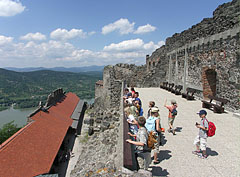
In Roman times a fortification already stood on Sibrik Hill, but the ruins of a military camp and a Roman villa have also been found here. The name of Visegrád has Slav origins and it means a castle built on a hill.
Prince Géza realised that the southern gate needed to be fortified in order to protect Esztergom, the royal seat. This was when Visegrád became an overseer’s seat. After a while it also became a royal seat. The Turks later invaded it. In 1686, after the hundred and fifty year long Turkish occupation, the completeley depopulated settlement was peopled with Germans.
Citadel (Upper Castle)
This is Hungary’s most beautiful and best preserved medieval castle. After the first Mongol invasion in the 13th century Béla IV and his wife Lascaris Maria from Byzantium launched the construction of the castle, subsidised by the jewellery of her dowry. The purpose of this plan was to establish a place which could protect their daughter, Margaret, and the inhabitants of the area in case of a hostile attack.

Margaret lived in a Dominican monastery on the Island of Rabbits, which is now called Margaret Island. Becasue of the miracles made during her life and the wonderful cures connected to her grave she later became one of Hungary’s greatest saints.
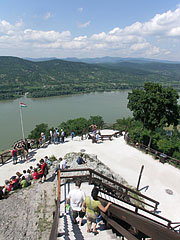
The castle itself was triangular with two towers. One of the gate towers was overlooking Buda and the other, the old tower, protected the castle against attacks coming from the north. The chapel was located in the old tower and it was consecrated to Saint Elizabeth of the Árpád dynasty.
Charles I seized the castle in the 14th century and made this his royal seat, instead of Temesvár, which is now in Romania. The Saint Crown was brought here form Fehérvár during this time, and it was kept in Visegrád for almost two centuries. Furthermore the Polish crown and crown jewels were also kept within its walls for more than forty years.
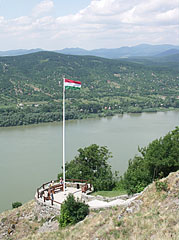
From the year 1526 onwards Turkish attacks devastated the castle. For a long time it was their property and during which much of it got destroyed. But the worst damage came in 1702 when Leopold I, Austrian Kaiser, blew it up.
The Lower castle and Salamon Tower
The Lower castle and the Citadel was connected with a wall closing the valley. Two watchtowers and a gate tower were located on it. The rebel Salamon was kept in captivitiy in Visegrád on the command of St Ladislaus, and the fortified building got its name after this event in the 13th century. It is true that the tower was named after King Salamon, but in fact he was not kept here, but in the overseer’s castle on Sibrik Hill.
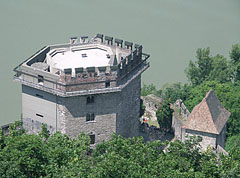
Salamon Tower is a six-floored, hexagonal building which was connected to the lower bastion with a strong wall. Its lower part was used both for military and agricultural purposes, while the upper part served as living quarters.
Royal Palace
It was constructed for one reason, namely that the Citadel and the Lower Castle proved to be too small, so to replace them a spacious and Italian-like palace was built. The two-styled, Renaissance and late-Gothic, palace became the official seat of the Hungarian rulers until Sigismund transferred it to Buda.
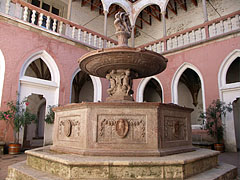
The building was renovated during the reign of Matthias Corvinus, when he converted it into a summer residence. He did not really stay in the Citadel, but in these beautiful surroundings, where he organised magnificent dinners and hunts. According to a story the palace was so splendid that the envoy of the Turkish emperor on seeing it was so overcome he just kept repeating ’The emperor is greeting you’.
Roman fortification on Sibrik Hill, Castrum
This triangular military camp was constructed during the reign of Constantinus I. In those times it was a significant protective fortification. Its gate tower, overlooking the Danube, guarded the old road against barbarian attacks. In the 4th century the Roman garrison left and German Quadi tribes settled here. Their dwellings, holes dug into the ground, can still be seen.
Особености, характеристики
Тип:
Малкия град, градче, паланка
Местоположение:
Европа (Континент) > Унгария (Страна) > Будапеща и околностите (Туристическа област) > Пещ медйе (Окръг, област) > Danube Bend (Dunakanyar) (Географска област)
GPS координати: Ширина 47°46'47", Дължина 18°58'57" (N47 46.78 - E18 58.95)
Visegrád - Фотоалбум, снимки, фото галерии (220 снимки / 4 галерии)
Visegrád - Панорамните изображения (1 снимки)
Можете също така да се интересуват от (Свързани страници):
Дестинации в пътеводителя:
Visegrád (220 снимки + 1 панорамни изображения)
Danube Bend (Dunakanyar) (1 769 снимки + 6 панорамни изображения)
Пещ медйе (15 122 снимки + 50 панорамни изображения)
Будапеща и околностите (15 989 снимки + 52 панорамни изображения)
Унгария (27 287 снимки + 163 панорамни изображения)
и в допълнение:
(в рамките тук: Пещ медйе и Danube Bend)
Pilis Mountains (Pilis hegység) (335 снимки)
Buda Hills (Budai-hegység) (8 632 снимки + 21 панорамни изображения)
Gödöllő Hills (Gödöllői-dombság) (4 203 снимки + 21 панорамни изображения)
Visegrád Mountains (Visegrádi-hegység) (116 снимки + 1 панорамни изображения)
Cegléd (125 снимки + 2 панорамни изображения)
Ráckeve (92 снимки)
Dunakeszi (259 снимки)
Göd (23 снимки)
Nagykőrös (250 снимки + 2 панорамни изображения)
Nagymaros (31 снимки)
Pilisvörösvár (88 снимки)
Szentendre (597 снимки + 1 панорамни изображения)
Vác (232 снимки + 2 панорамни изображения)
Esztergom (110 снимки + 1 панорамни изображения)
Dunakeszi (259 снимки)
Göd (23 снимки)
Nagymaros (31 снимки)
Szentendre (597 снимки + 1 панорамни изображения)
Vác (232 снимки + 2 панорамни изображения)
Csővár (105 снимки)
Kóspallag (53 снимки)
Márianosztra (37 снимки)
Nagybörzsöny (4 снимки)
Pilisszentkereszt (122 снимки)
Nógrád (181 снимки)
Zsámbék
Всеки панорамна снимка тук:
Visegrád (1 снимки)
Danube Bend (Dunakanyar) (6 снимки)
Пещ медйе (50 снимки)
Будапеща и околностите (52 снимки)
Унгария (163 снимки)
Европа (165 снимки)
Всяка нормална снимка тук:
Visegrád (220 снимки / 4 галерии)
Danube Bend (Dunakanyar) (1 769 снимки / 31 галерии)
Пещ медйе (15 122 снимки / 221 галерии)
Будапеща и околностите (15 989 снимки / 234 галерии)
Унгария (27 287 снимки / 462 галерии)
Европа (30 494 снимки / 523 галерии)
https://www.panadea.com/bg/guidebook/visegrad

Добави към Любими Добави към Отметките
Споделете с вашите приятелите!
и т.н.
Всички права запазени
- ©2010-2022
Neuronit Creative Studio - Mogyoród / Будапеща / Унгария






















